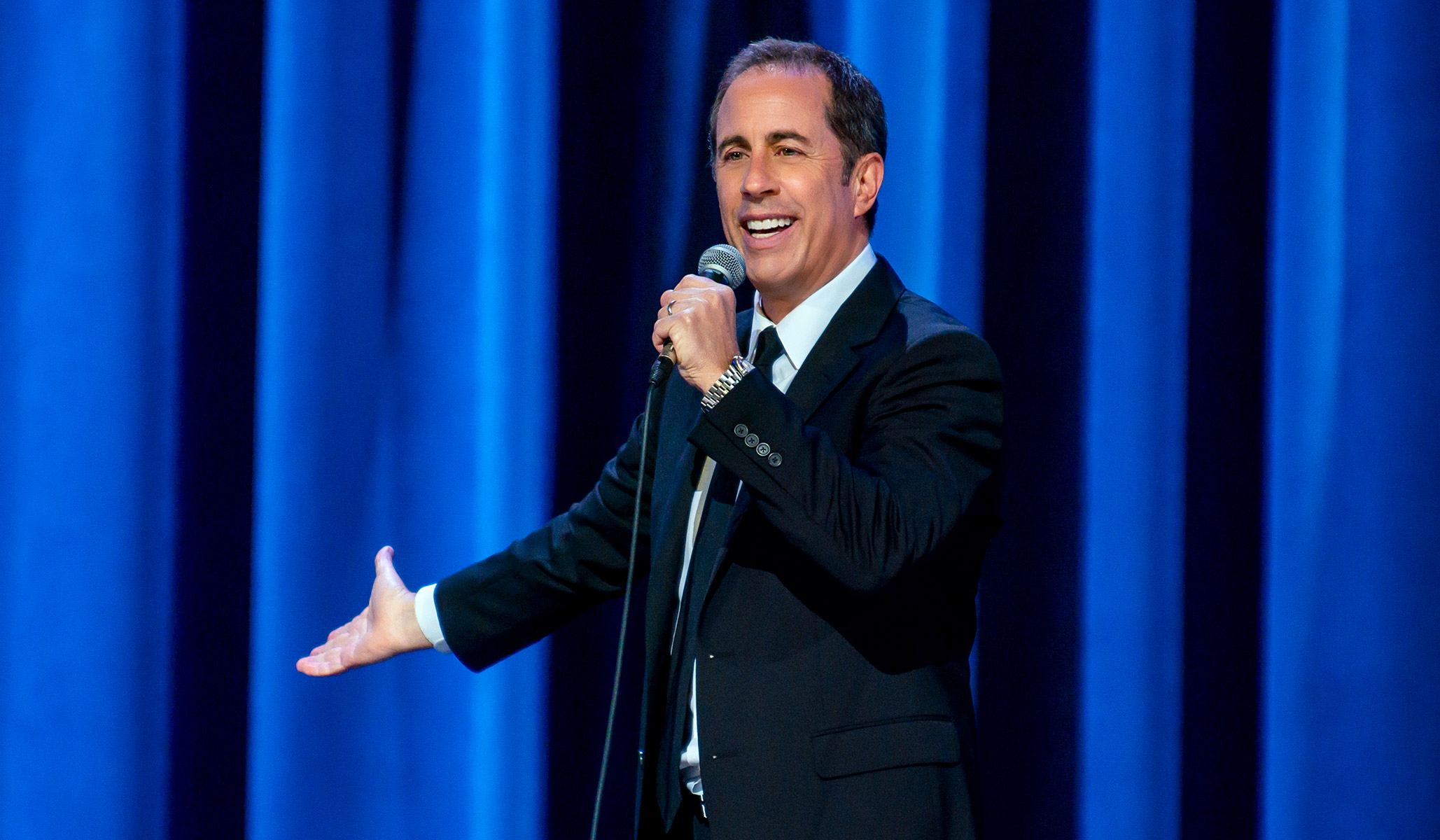


My wife and I went to see Jerry Seinfeld Friday night at the Beacon Theater in Manhattan. It was a remarkable night.
I’ve been in a lot of audiences over the years, for all manner of different events. There is something different about those rare times when the crowd’s emotional pitch is tuned just higher than usual. I’ve noted some of these crowds over the years. For an entertainment event, the most electric crowd I was ever part of was the Madison Square Garden crowd for Game Six of the Knicks–Heat series in May 1997, when the Knicks roster was decimated by ridiculous suspensions of Patrick Ewing, Allan Houston, and Charlie Ward after a brawl. That crowd was on its feet with righteous fury from the opening tip all the way to the end, trying to will the undermanned roster to victory. The Knicks hung doggedly in there, holding their last lead with eight and a half minutes left before the Heat pulled away, burying the hopes of one of the two or three best Knicks teams of the past half century.
Last night’s crowd at the Beacon wasn’t in that league, but it was far from an ordinary crowd for a stand-up comedian. We bought these tickets three years ago, for a show that was originally scheduled for March 13, 2020 — the end of the Before Times. It was not canceled until the night before the show, just as the whole world was shutting down. I retrieved my older daughter from college on the 14th and spent my last day in the office as a lawyer on the 16th — the first time I grudgingly wore a mask in public, when people in the office were still obsessively hand-washing but nobody was in masks indoors. Even a few months ago, people were still required to mask up to go to Broadway and to show proof of vaccination to dine indoors. There was, therefore, a palpable sense in the densely packed crowd that we were there not just to see a funny show but to celebrate the fact that we survived it all, came out the other end, and could finally see a comedy show we paid for three years ago. Add to that the fact that Seinfeld has a cult-hero status few standups achieve, and that he is very much on his home turf in Manhattan. He played that up, offering a lot of gags about Manhattan filth, riding elevators, and how we describe living in New York but on Long Island. He cracked that he could tell this was a New York crowd that appreciated his misanthropic complaints.
Seinfeld remains a master of the standup form, one who can bring down the house with the most banal subject matter and doesn’t need to work bluer than the sorts of mild profanity and sexual innuendo you could get away with on early-’90s network TV. There were definitely some old jokes mixed in (such as a routine about grooms wearing tuxedos at a wedding that I’m sure I heard him do on one of Seinfeld‘s standup bits), but also a lot of new-to-me material. That said, concessions to age and rust were also visible: his voice is scratchier now when he takes it up high for comedic effect, and he went back to refer to cue cards to remember which bit he’d be doing next, and the transitions got choppier as the show went on. While Seinfeld has been touring for about a month now, and it was his second set of the night, he’s also still shaking off the long layoff of two and a half years away from the stage. But seeing a few of the seams in his act only reminds the audience quite how much work goes into great standup. And Seinfeld’s obvious joy at being back doing standup was unfeigned; he even stuck around for a brief encore at the end of his set, taking a few questions from the audience and soaking in the crowd reaction before leaving the stage. New Yorkers were ready for a night about nothing, and so was he.
